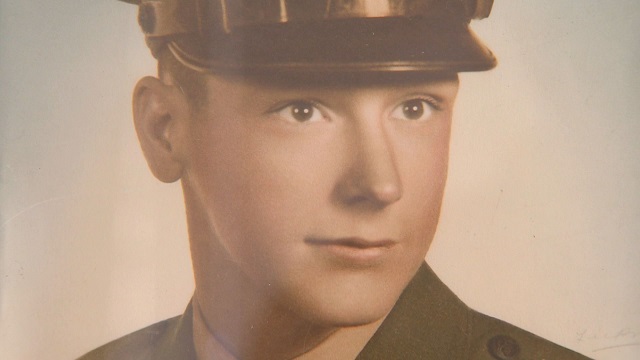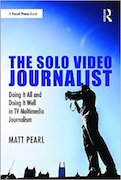Three months ago, I did something that would be considered blasphemous to the storytelling gods:
I blew off an invitation from Boyd Huppert.
When a 100x-Emmy winner reaches out to collaborate on a story, you should respond within minutes and say, “Absolutely, and where can I send the fruit basket to say thanks?” Boyd is not just a fabulous storyteller; he has been a constant source of inspiration, a guest on my podcast, and the author of the foreword for my book, The Solo Video Journalist. But on this day, I had to blow him off.
I had a good reason, though: my wife was in labor with our first child.
A day later, when our daughter had arrived and I had gained a few minutes to scroll through my messages, I saw Boyd’s note again and responded. He had discovered an extraordinary story involving a family in his region (the Twin Cities) and a 50-year-old man in mine (metro Atlanta). He proposed a video swap: I would shoot in ATL, and his team would shoot in MSP. When I realized I could shoot my part upon returning from paternity leave, I leapt at the chance.
Why? Of course I welcomed the opportunity to team up with Boyd. But I got especially excited about getting to work with his photographer. Boyd’s pieces for KARE-TV’s Land of 10,000 Stories segment are both poignantly written and immaculately shot, by photographers who regularly rank among the best in the country. I delighted at the chance to peek under the hood, use their footage, and study their techniques.
I got what I wished.
Boyd worked on this piece with Kevin Sullivan, a multiple finalist for NPPA Photographer of the Year and a recent Regional Edward R. Murrow winner. (He has since left KARE-TV to take a job with the Mayo Clinic.) Sully is a tremendous talent, and I dove into his video the way a child shovels through packing peanuts to get to a gift. I found treasure after treasure, from impeccably framed shots to beautifully captured moments. Here are three lessons I’ll take away for my own work as a photographer:
1. DON’T. STOP. SHOOTING. VIDEO. I sat down to log Sully’s video and quickly spied a detail that made me reevaluate my plans:
He had shot five hours over three days.
Some people would call this overshooting. Sully captured images and scenes from nearly every angle, and he kept shooting long after most photographers would have wrapped. He certainly gave me plenty more work in terms of logging.
But he made my job editing far easier. When I sat down to cut my story, I found a seemingly endless supply of visual options for each line of script. Those options also aided my writing. We always talk about “writing to your video”, and I imagine Sully shoots so much raw video to loosen the aesthetic chains on reporters like Boyd. This story involved a former Marine, Skip Schmidt, who had taken his own life after a tour in Vietnam left him with PTSD. His family created a scrapbook with photos of his life, and Sully captured virtually each photo – Skip as a boy, Skip in boot camp, Skip in Vietnam, Skip after coming home. I examined these images and knew I could write with ease to each of them. I could choose which to include and which to discard.
That’s a powerful tool for any reporter … and anyone editing that reporter’s writing. Since I do both, I appreciated Sully’s thoroughness on multiple levels.
2. When in doubt, look outside the action. Sully didn’t stop with photos. Everywhere he went, he picked off an arsenal of cutaways that an editor could sprinkle into the piece.
For example, the story’s climatic moment (at least, in my version) occurs when Skip’s biological son, the Atlantan, arrives at the Twin Cities airport and finally meets his father’s four siblings. (The son had just learned the identity of his biological father months earlier.) Of course, Sully captured the moment. In my version, I played it for 25 seconds straight. But he also got plenty of general airport shots: terminal signs, people waiting, a pianist playing ballads for passersby. That enabled me, in my script and edit, to build up to the moment instead of just diving into it.
Perhaps this next note might be assumed, but Sully didn’t simply capture cutaways. He framed and focused them in a way that made them stand out visually. Count them in the piece below, and study Sully’s craft. You’ll see what I mean … and why those cutaways are so valuable.
3. Mic up your subjects, and then get out of the way. I watched nearly every hour of Sully’s raw video, but I rarely heard his voice. Despite his diligence and investment in the story, he remained content to stay silent in the background and capture the action without drawing attention.
He partially did this with a liberal helping of the 2x extender on his camera. This enabled him to notch extreme tight shots without invading the scene. Sadly, my camera does not come with an extender, but I like to think I have learned a similar method as a shooter. Even as a solo video journalist, I try to say as little as possible (without it being awkward) to the subjects of my story – except, of course, when I meet and interview them. I mic them up when I arrive, chat a little bit to introduce myself, and mostly hang back and let the action unfold.
You can watch my story above and Boyd’s here. Three months have passed since that initial e-mail, but I am extremely proud of the end result … and extremely grateful to receive the opportunity.
The Solo Video Journalist is available for purchase. You can find it on Amazon, Barnes & Noble, and the publisher’s web site.
Matt Pearl is the author of the Telling the Story blog and podcast. Feel free to comment below or e-mail Matt at matt@tellingthestoryblog.com. You can also follow Matt on Facebook and Twitter.

